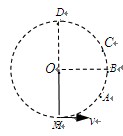任务型阅读。
According to one study, words send only 7 percent of a person's message. Intonation (语调) and voice
quality communicate 38 percent, and nonverbal (not using or involving words) cues (暗示) transmit a large
55 percent. That means people pick up more from nonverbal communication than from the words a person
says. When studying a foreign culture then, it just makes sense to pay attention to how people use nonverbal
cues.
Gestures consist of a major form of nonverbal communication. But often these gestures are culture-bound.
For example, when the Maoris of New Zealand stick out (伸出) their tongue at someone, it is a sign of respect.
When American schoolchildren make the same gesture, it means just the opposite. Also, Americans often
indicate "OK" with their thumb and fore-finger touching to form a circle. The same gesture means "money"
to the Japanese and "zero" to the French. For that reason, people in a foreign culture must use gestures with
caution.
Another part of nonverbal communication is the one that you might not think about-space. When someone
comes too close, he feels uncomfortable. When he knocks into someone, he feels obligated (有义务的) to
apologize. But the size of a person's "comfort zone" varies, depending on his cultural or ethnic origin. For
example, in casual conversation, many Americans stand about four feet apart. People in Latin or Arabic cultures,
instead, stand very close to each other and touch each other often.
Considering the effects of nonverbal communication, we never really stop communicating. How we walk,
how we stand and how we use our hands all send a message to others. That's why it's possible to "read
someone like a book".
1. How does an American feel when an Arab stands too close to him? (no more than 3 words)
____________________________________________________________________________________
2. What does the gesture "OK" mean in Japan? (no more than 3 words)
____________________________________________________________________________________
3. Why do we pay more attention to nonverbal cues in a foreign country? (no more than 10 words)
____________________________________________________________________________________
4. Why should people in a foreign culture must use gestures with caution? ( no more than 10 words)
____________________________________________________________________________________

 ,则小球必能通过 D 点
,则小球必能通过 D 点 ,则小球必能通过 D点
,则小球必能通过 D点
 ,即
,即 ,此速度为临界速度,故D错误,若以此临界速度通过最高点,小球到M点时的速度为
,此速度为临界速度,故D错误,若以此临界速度通过最高点,小球到M点时的速度为 ,解得
,解得 ,故A正确,到达B点时的速度为此时的拉力为
,故A正确,到达B点时的速度为此时的拉力为 ,解得
,解得 ,此时绳子拉力为
,此时绳子拉力为 ,所以若小球通过B 点时,绳的拉力大于3mg,则小球必能通过 D 点,B正确,因为C点距离B点的位置不明,如果要想小球能顺利通过D点,则通过C点的速度必须大于
,所以若小球通过B 点时,绳的拉力大于3mg,则小球必能通过 D 点,B正确,因为C点距离B点的位置不明,如果要想小球能顺利通过D点,则通过C点的速度必须大于 ,C错误,
,C错误,